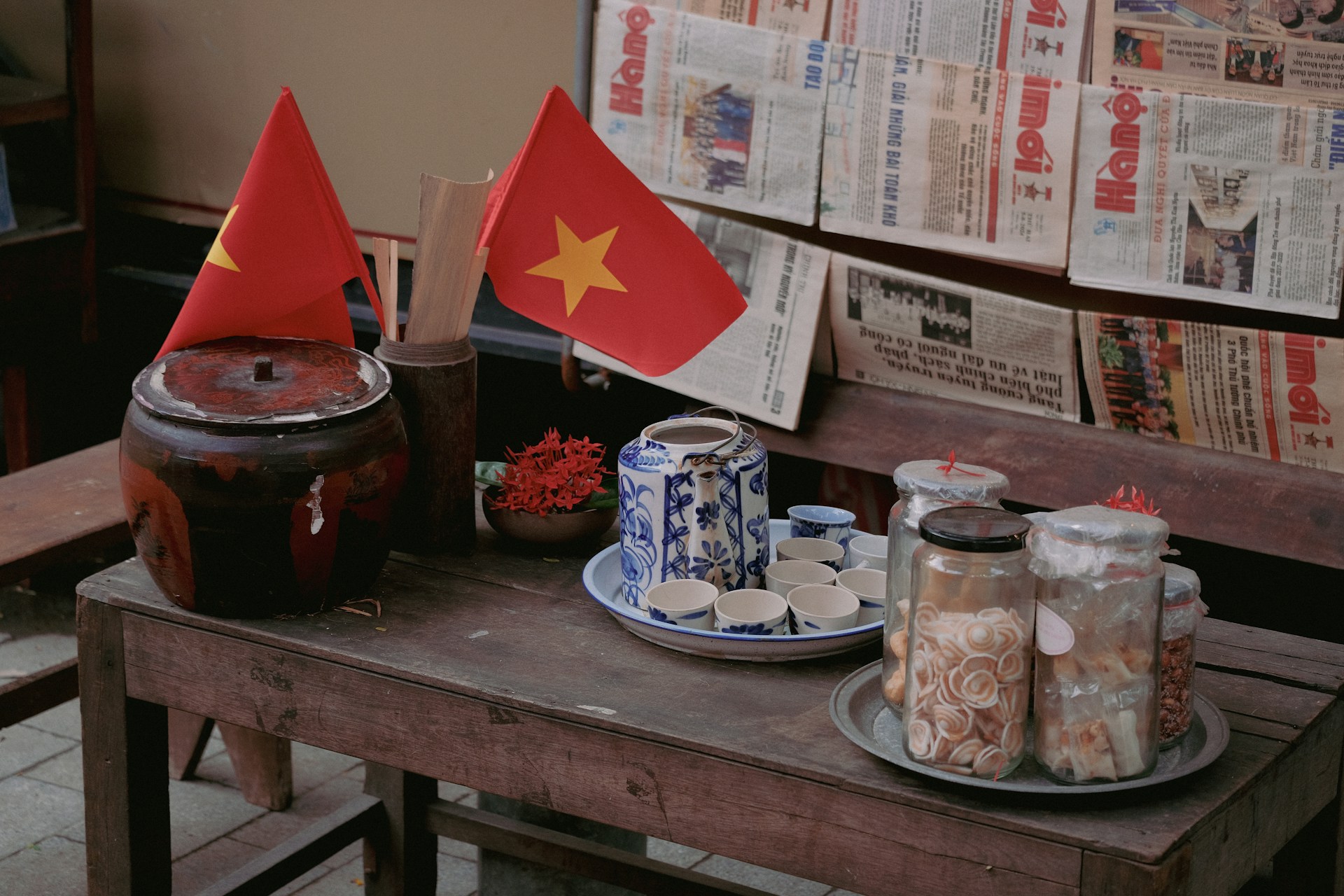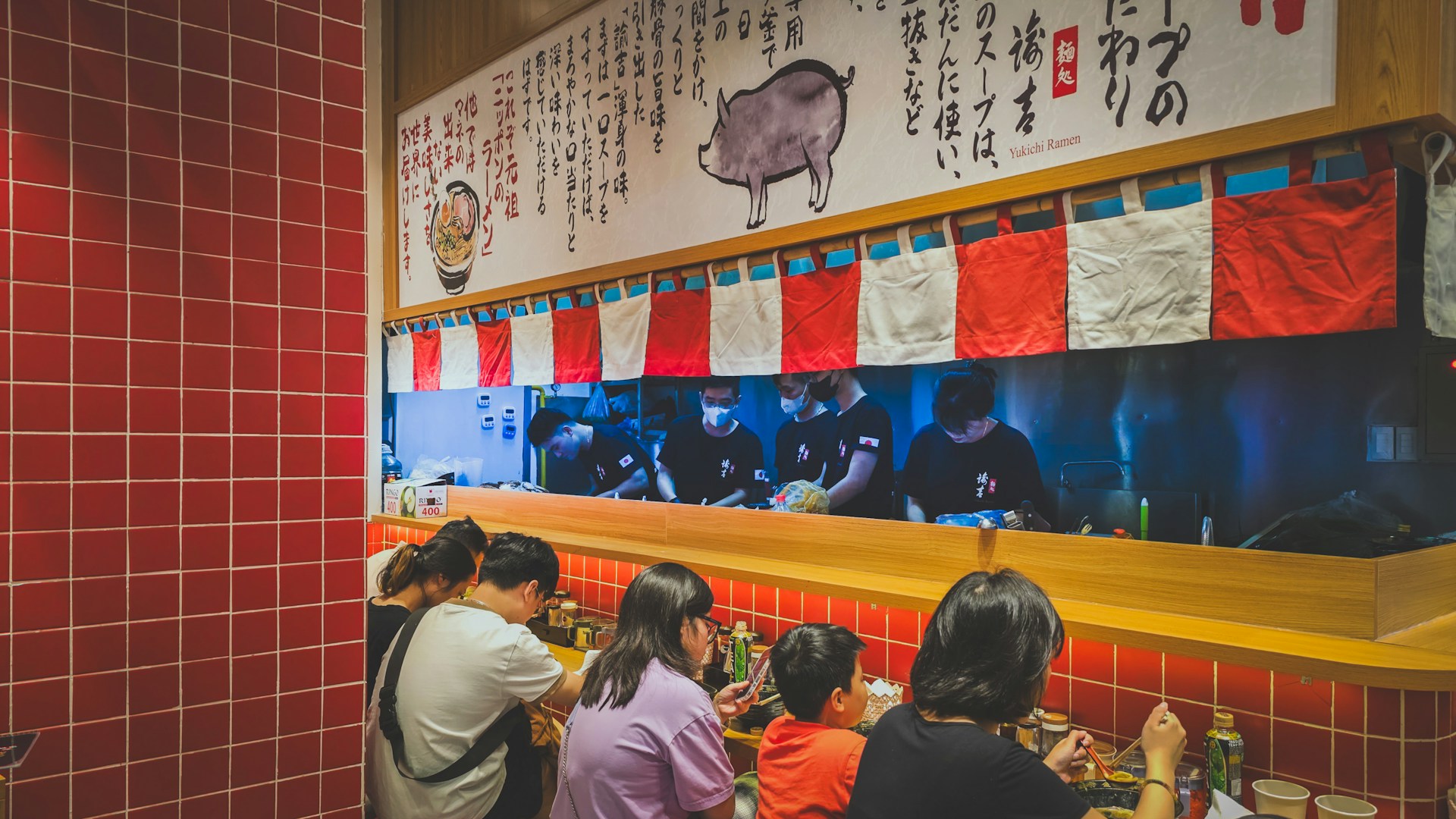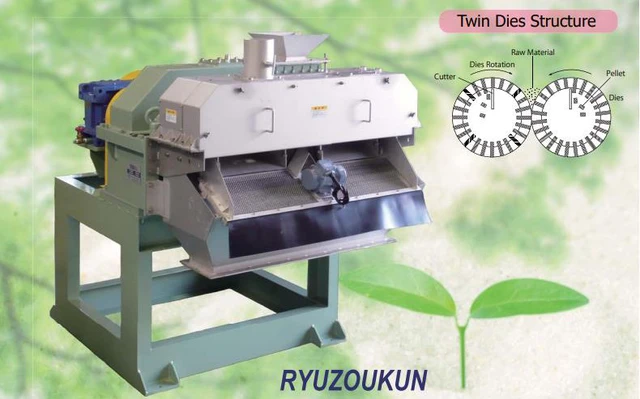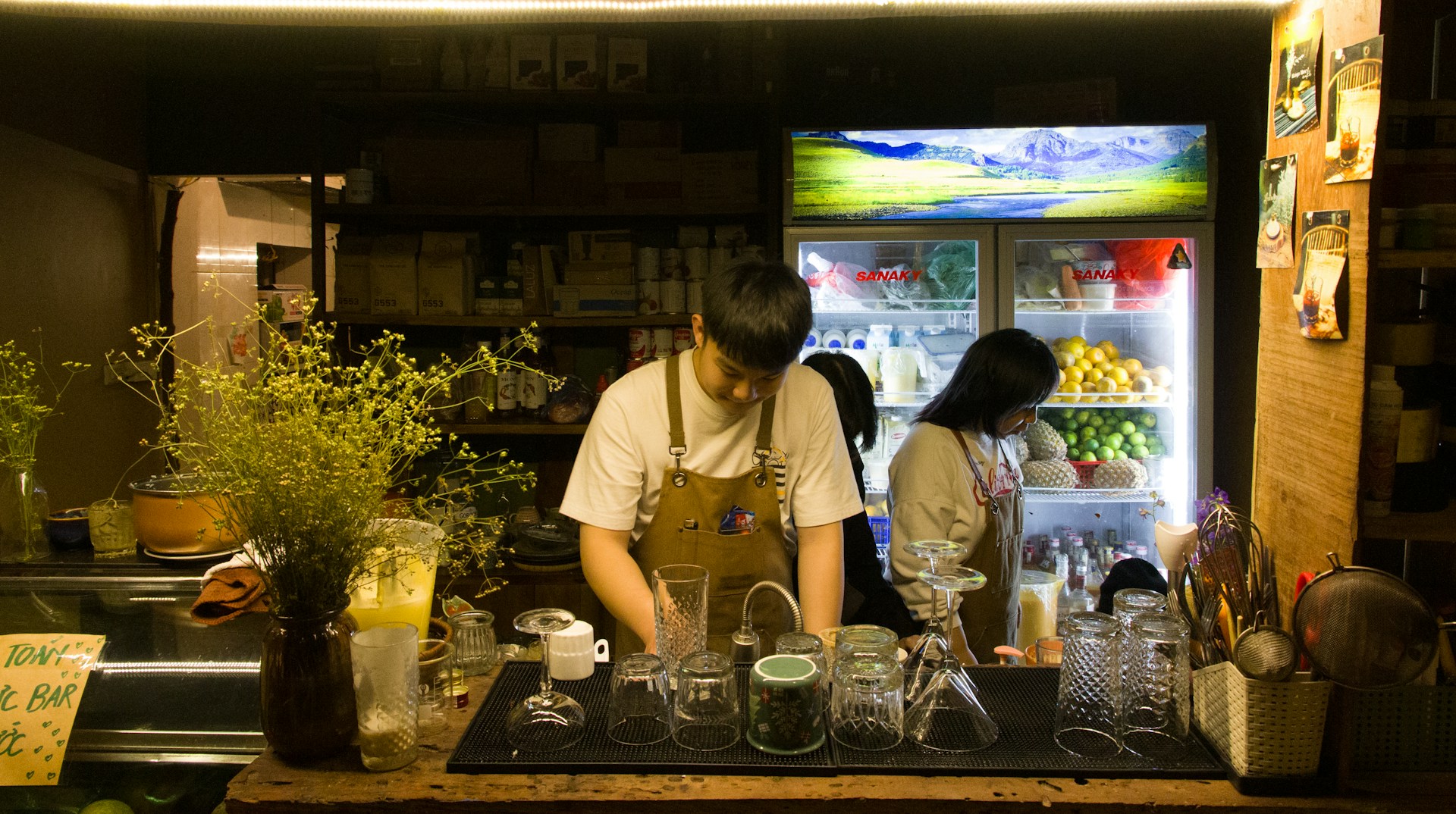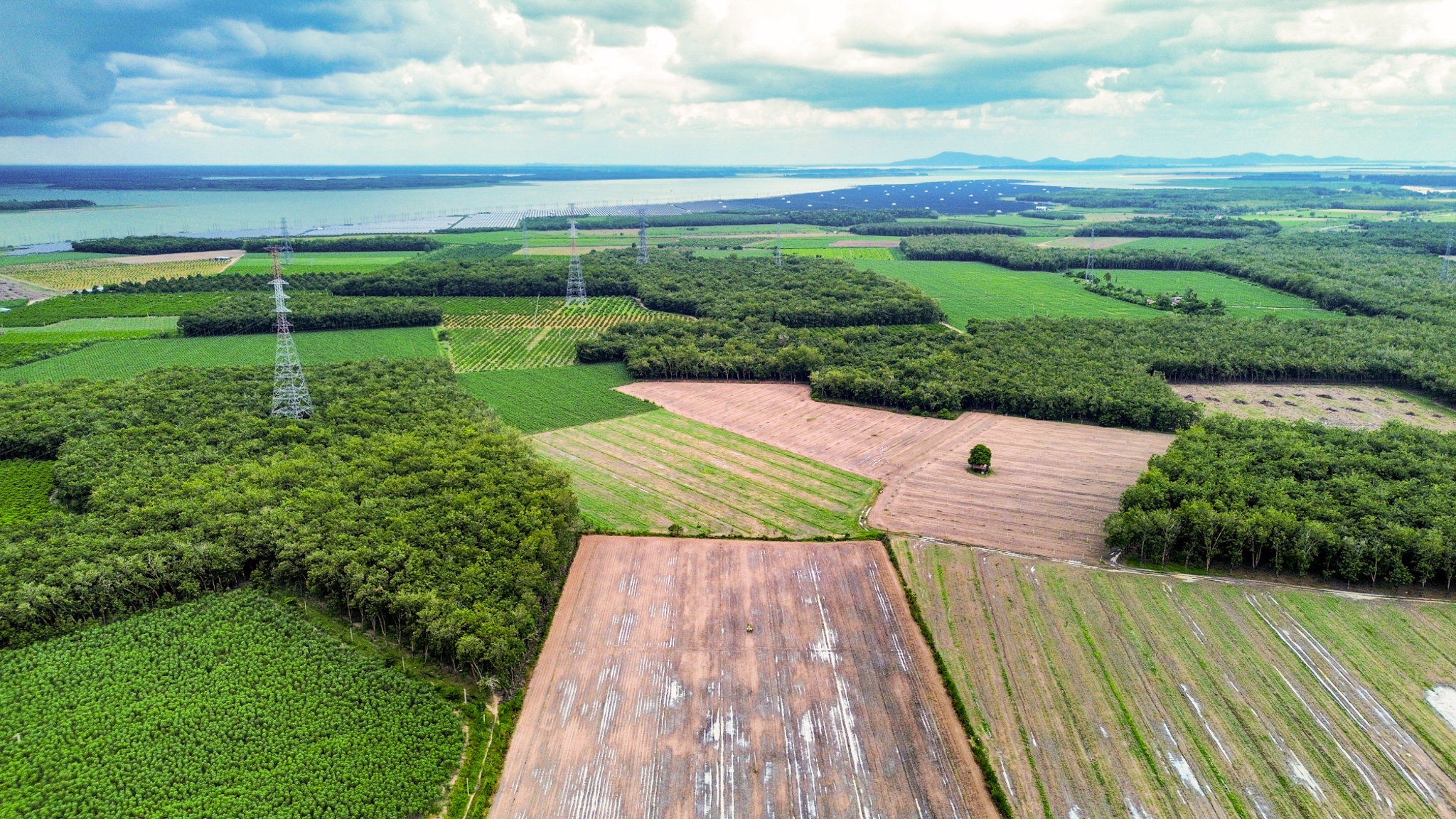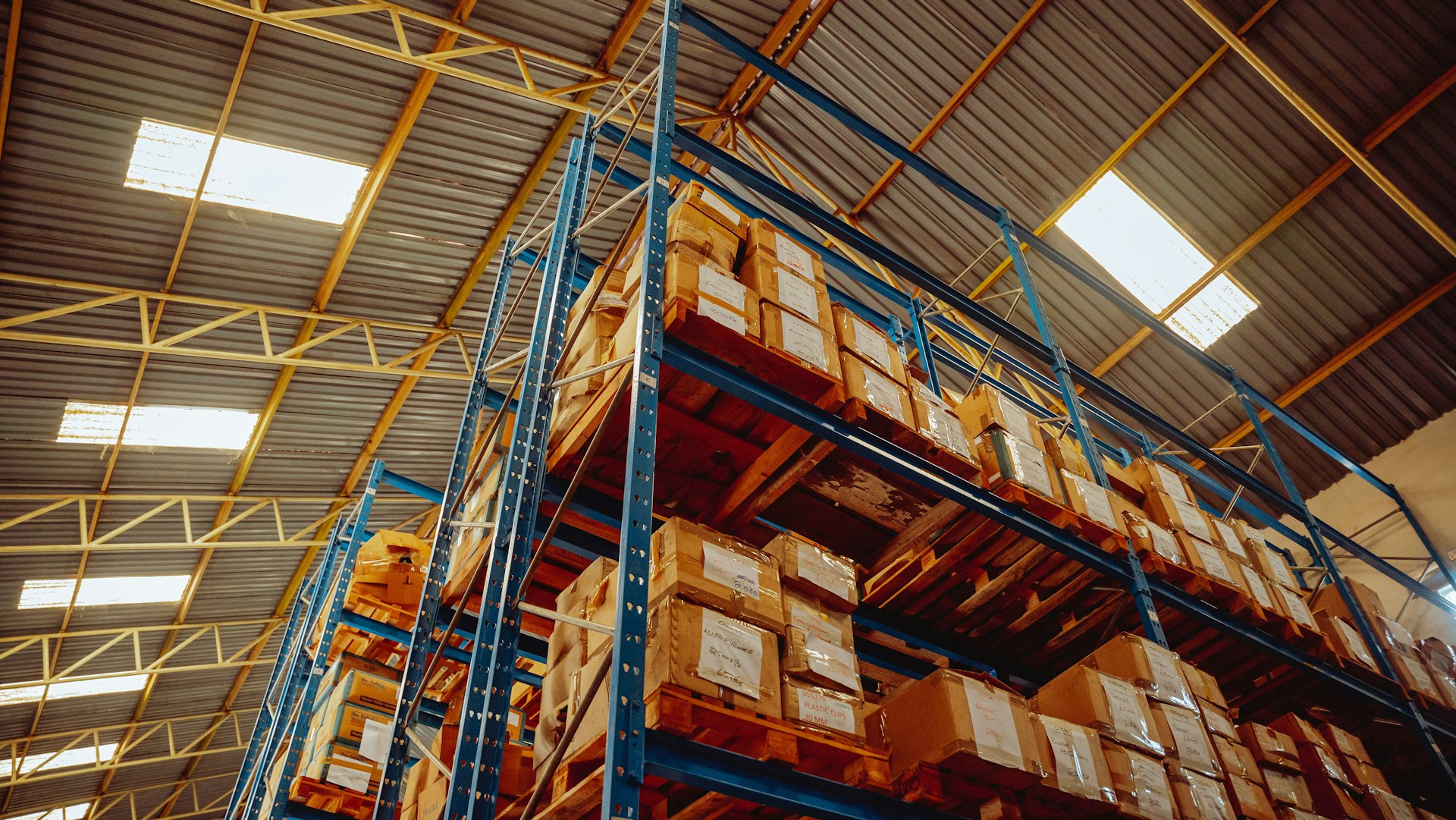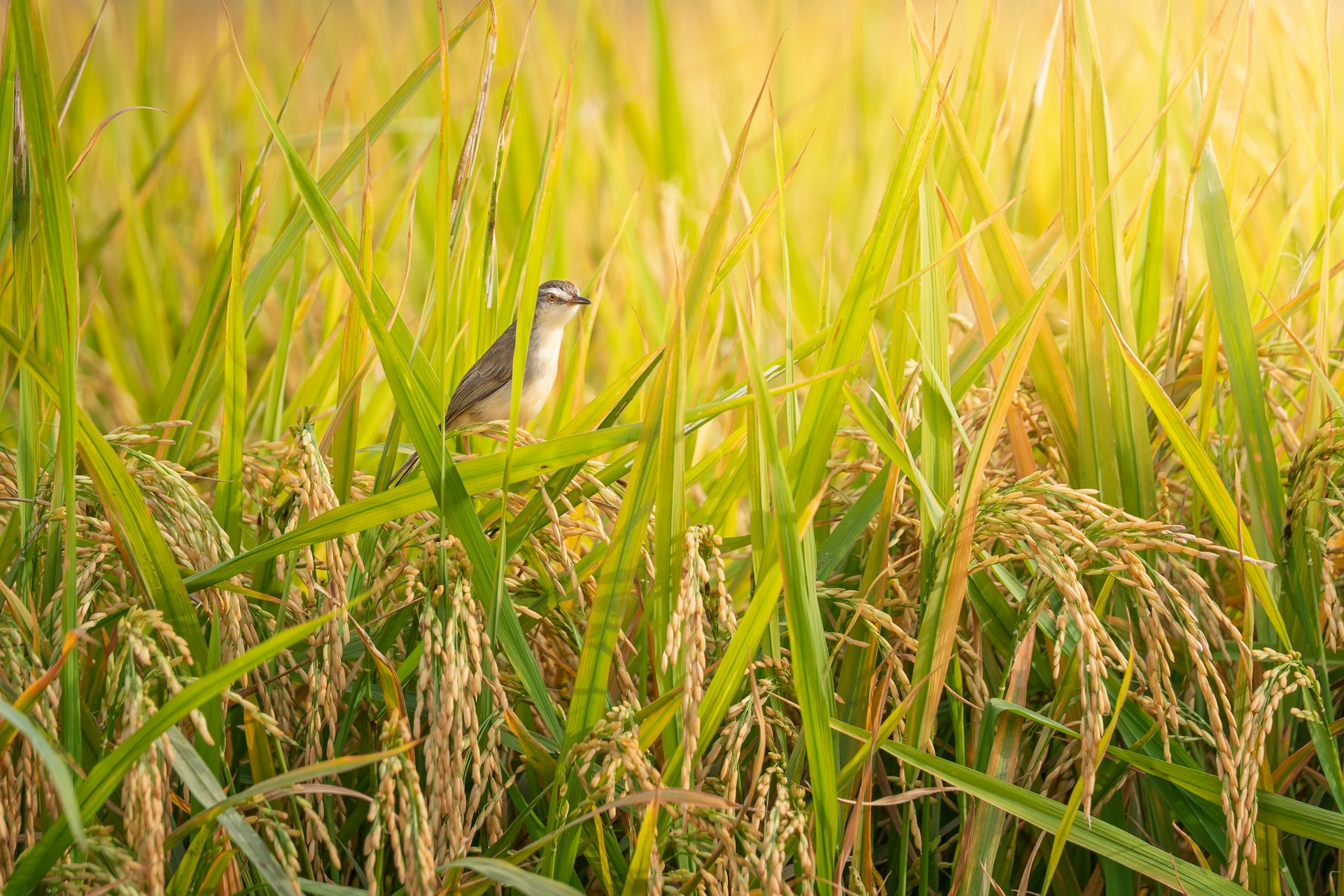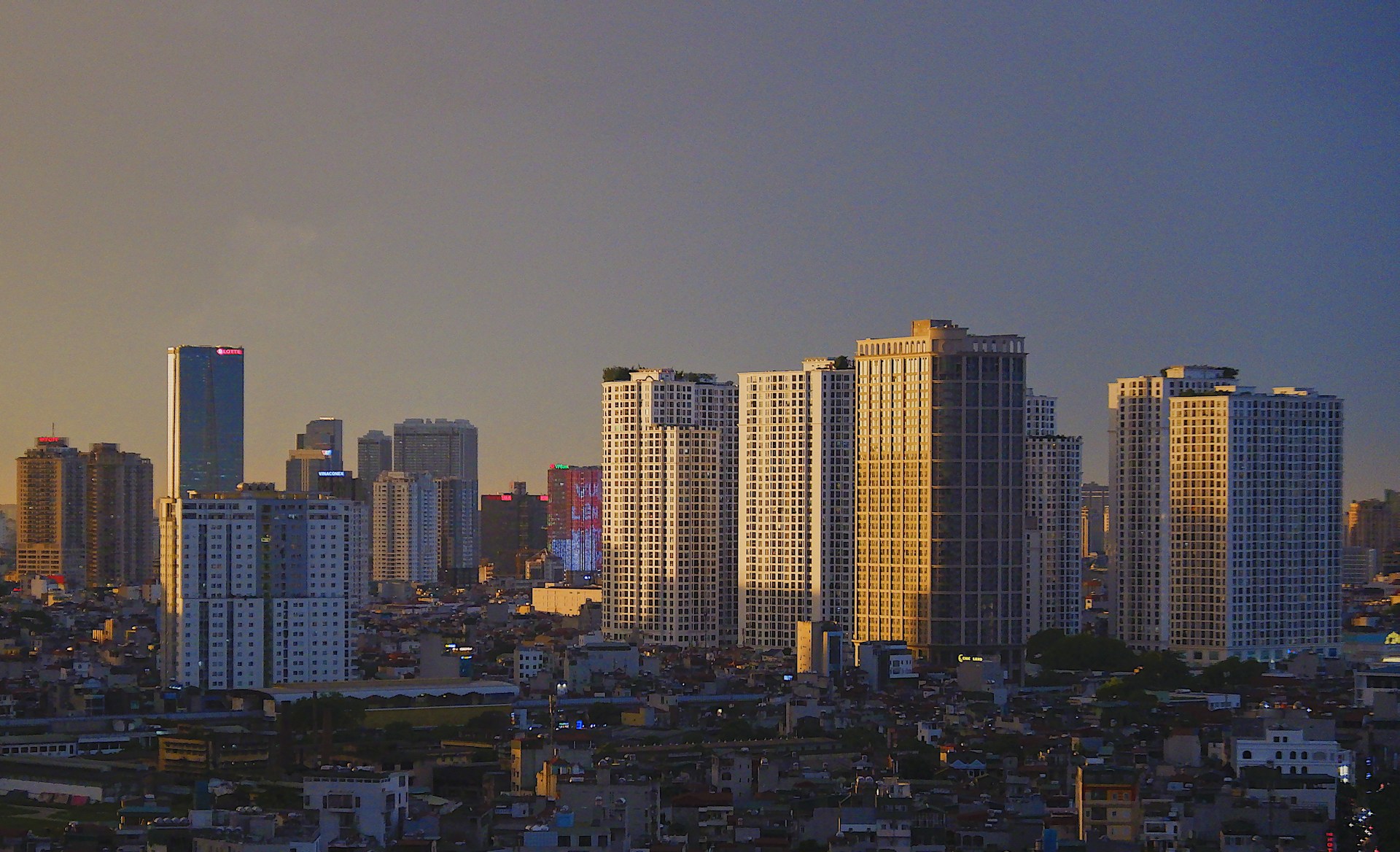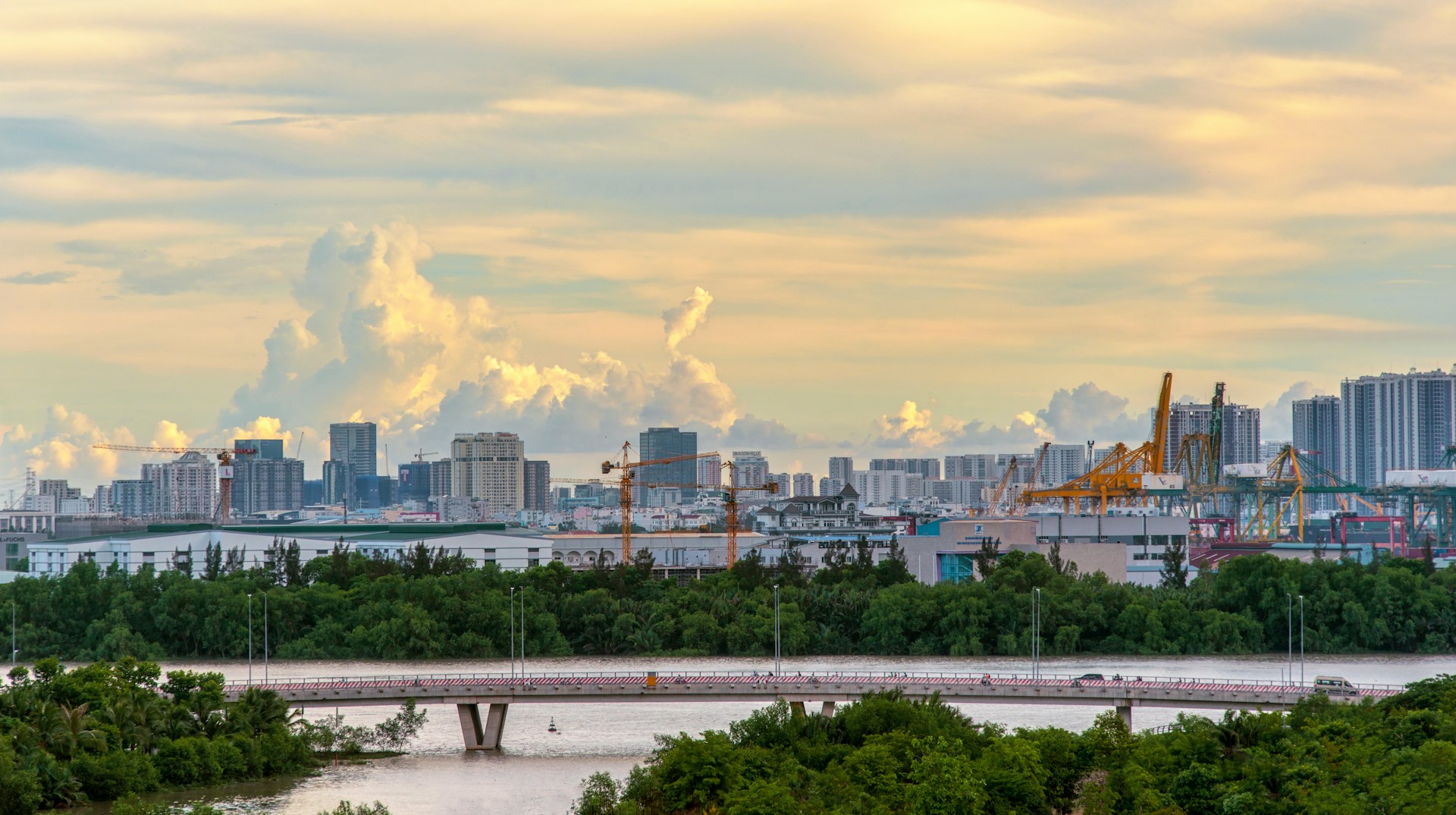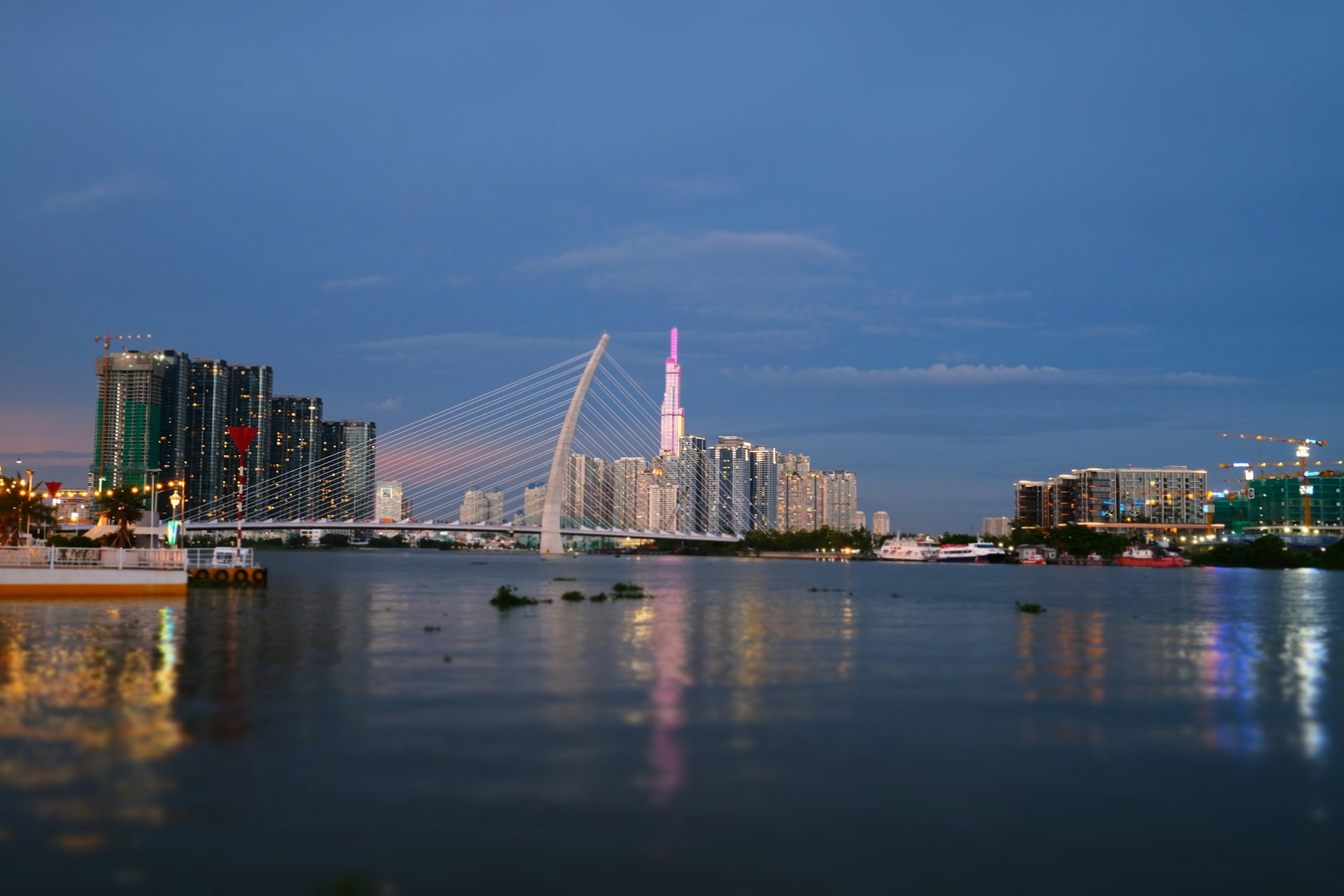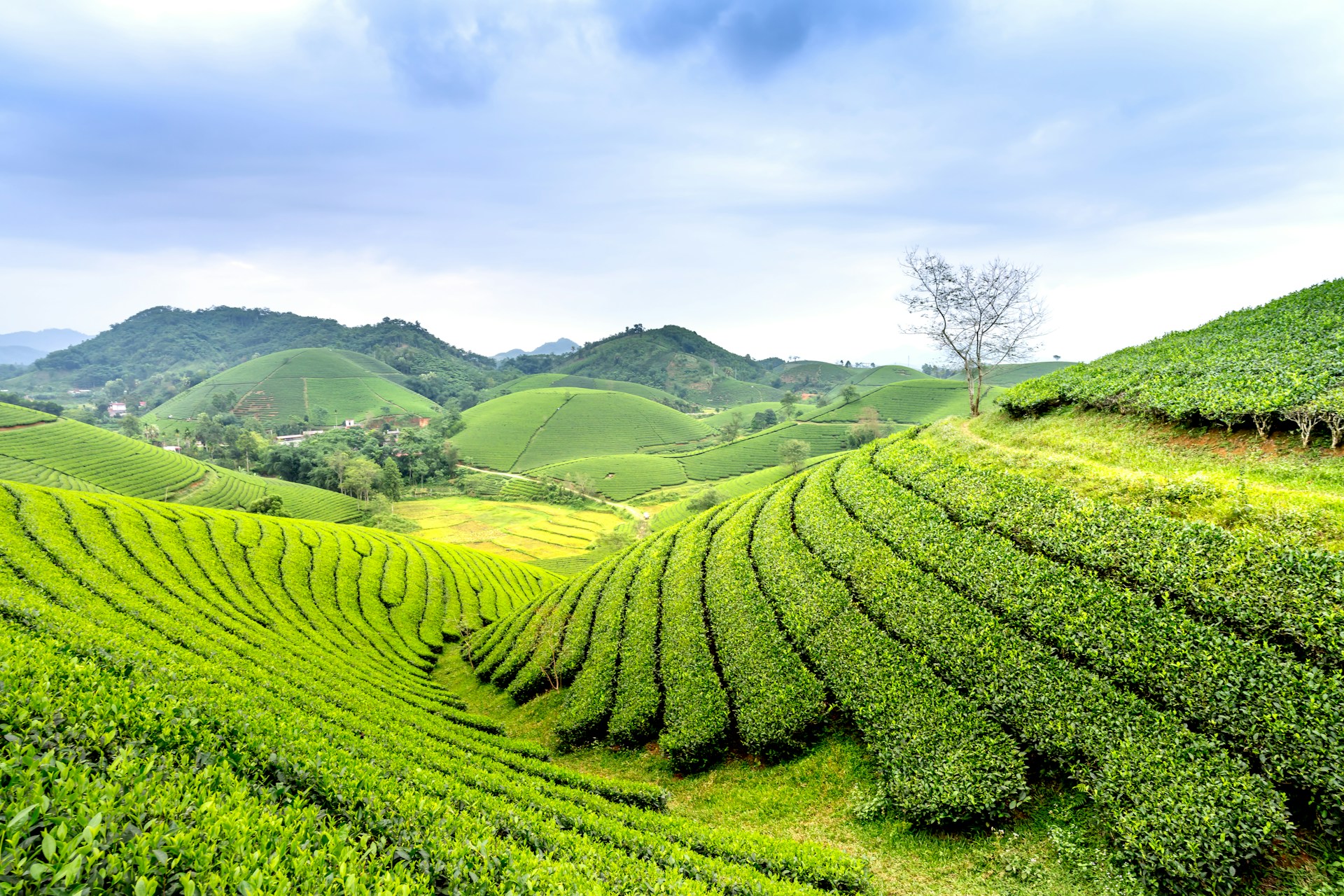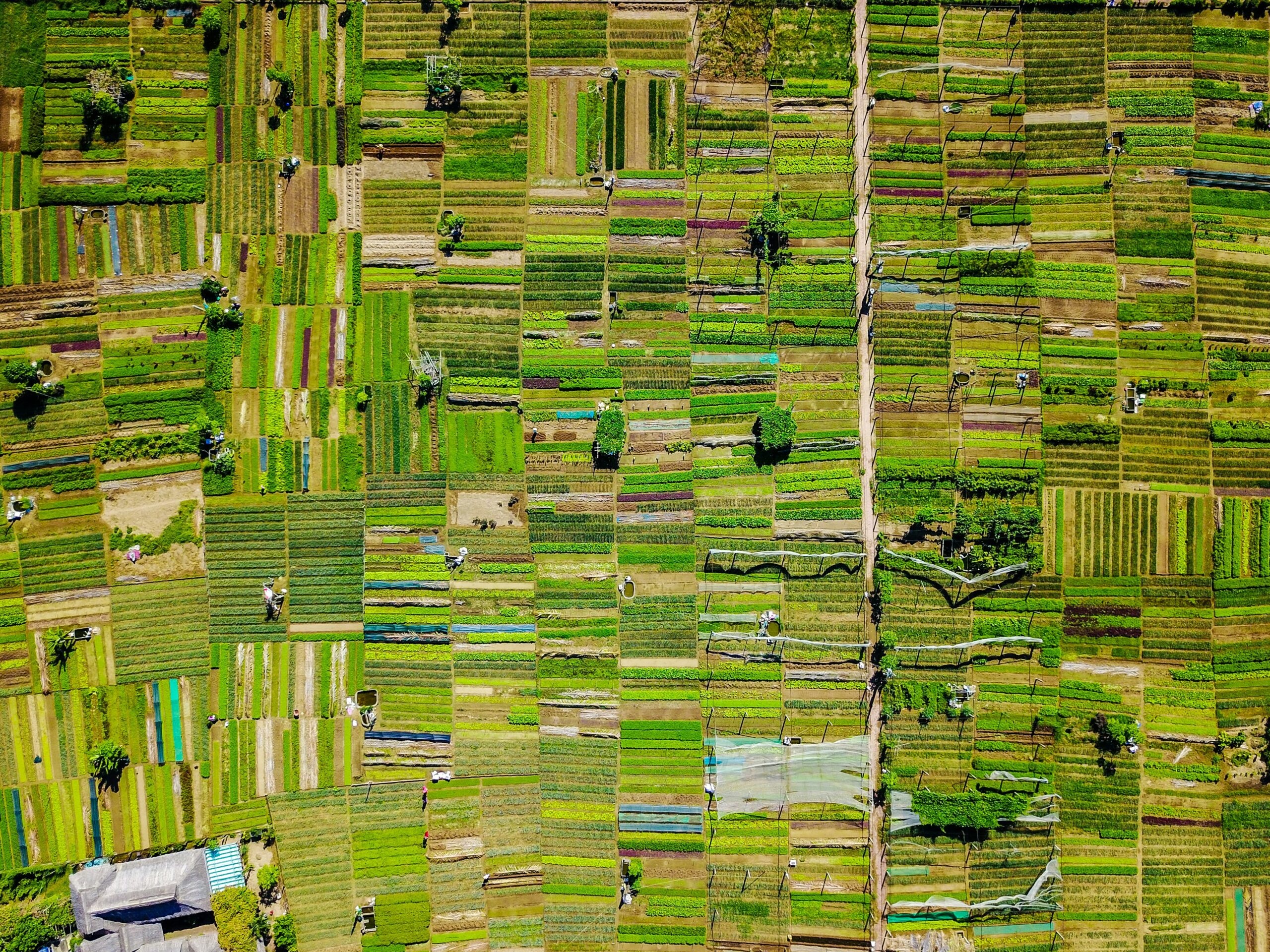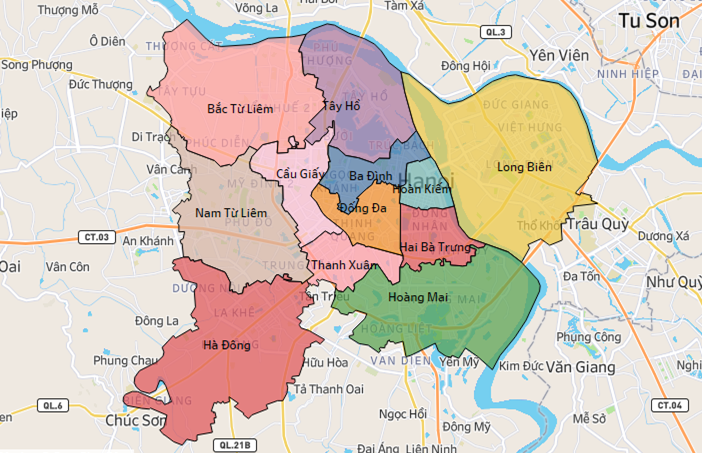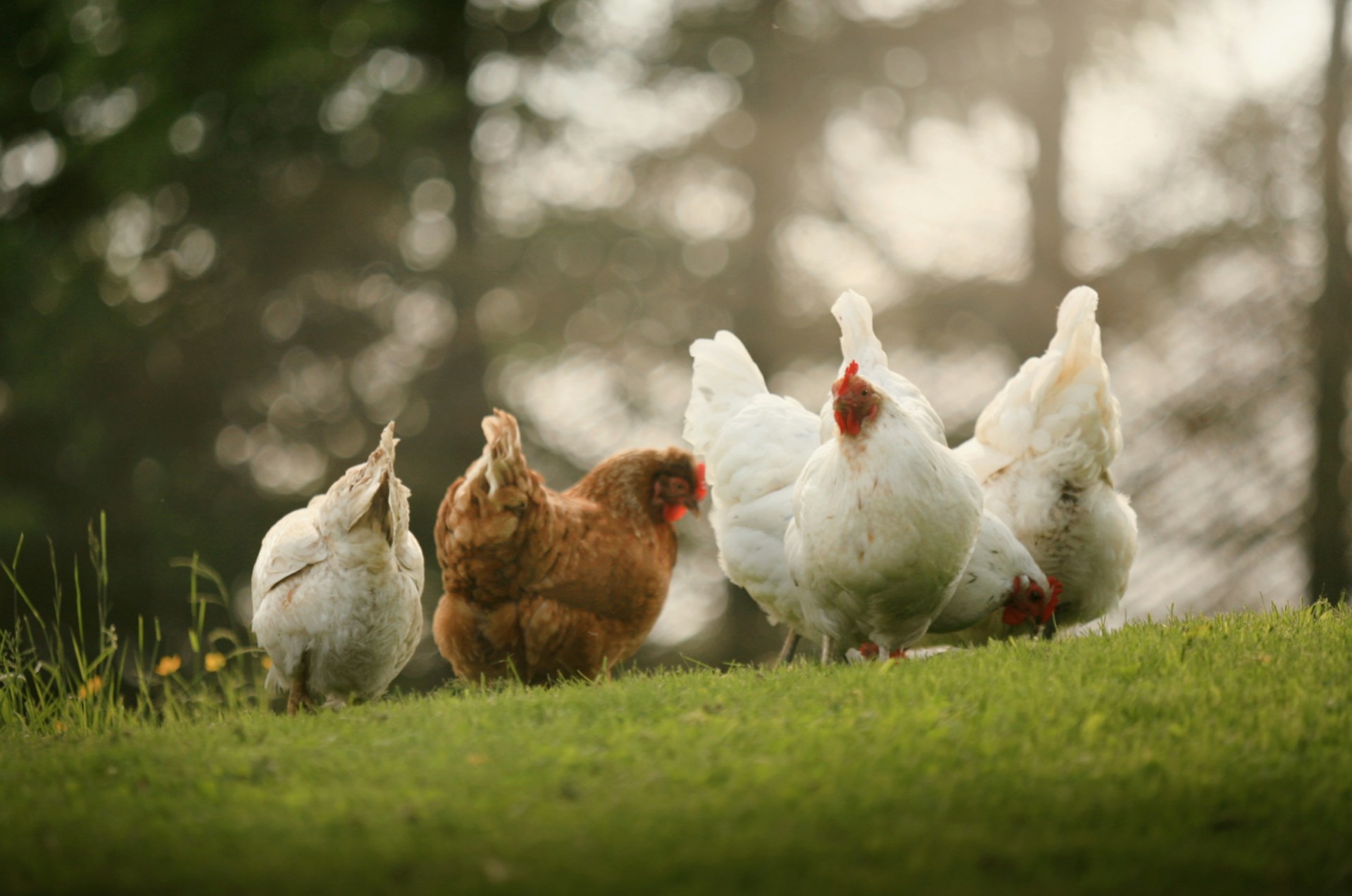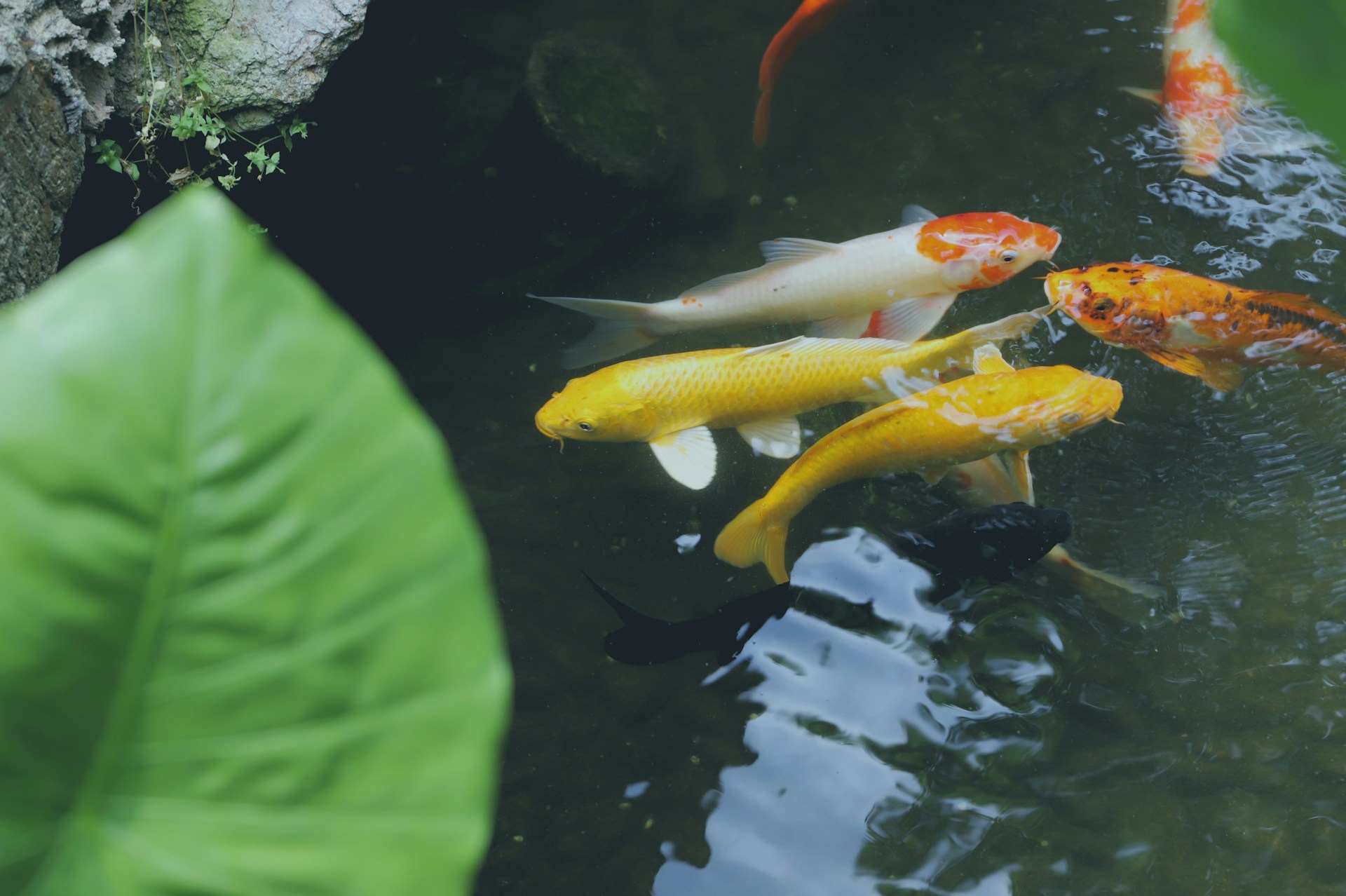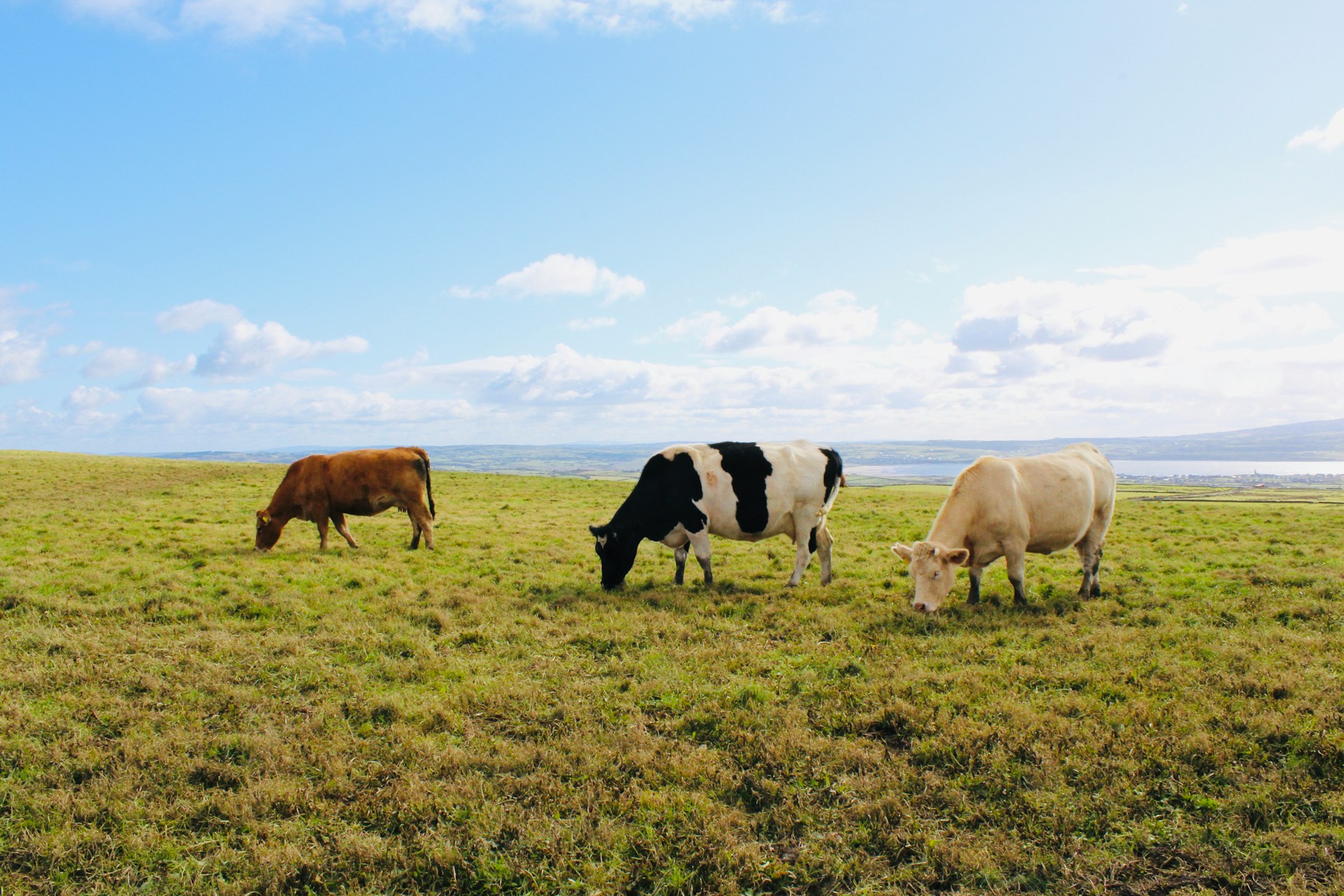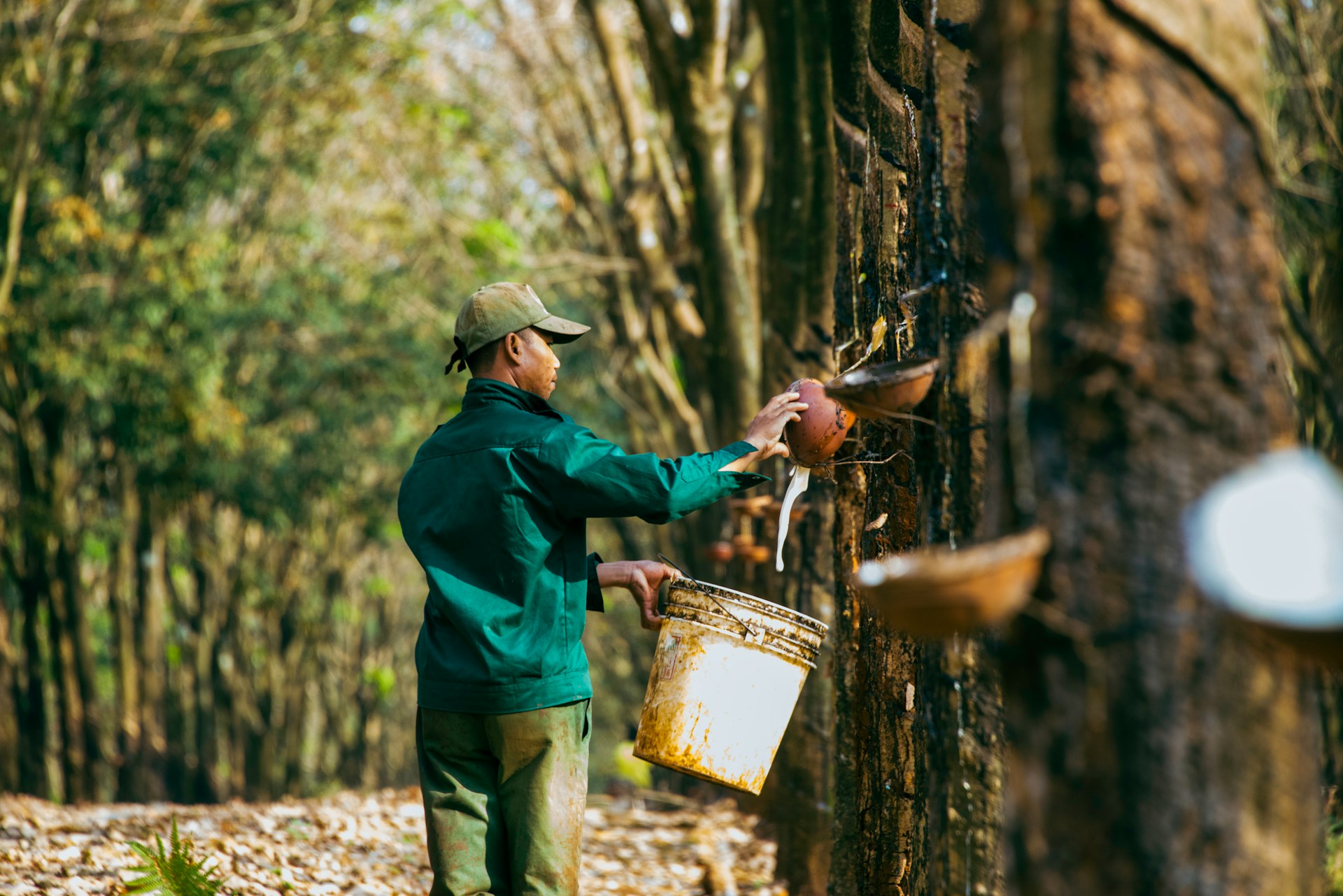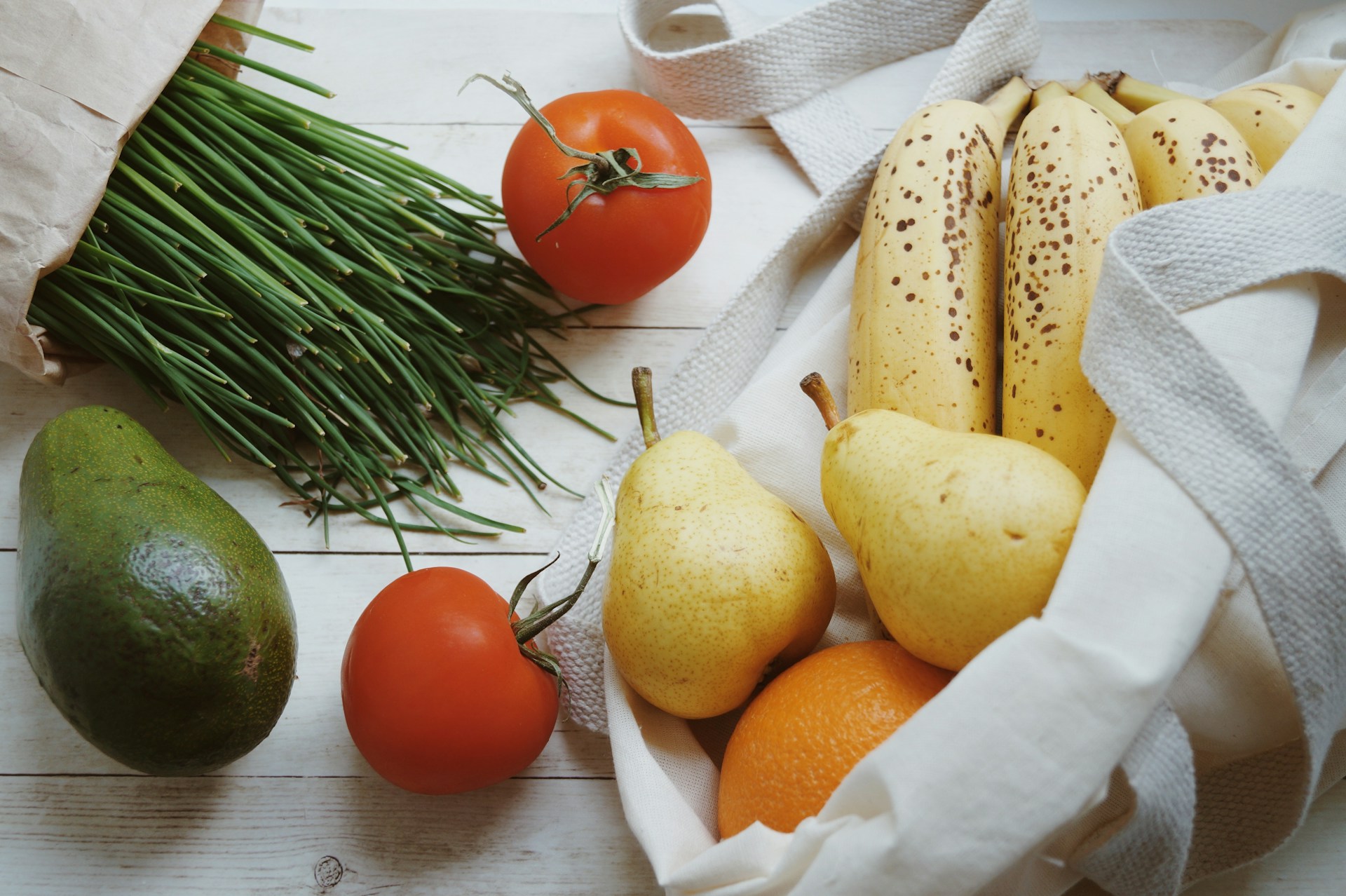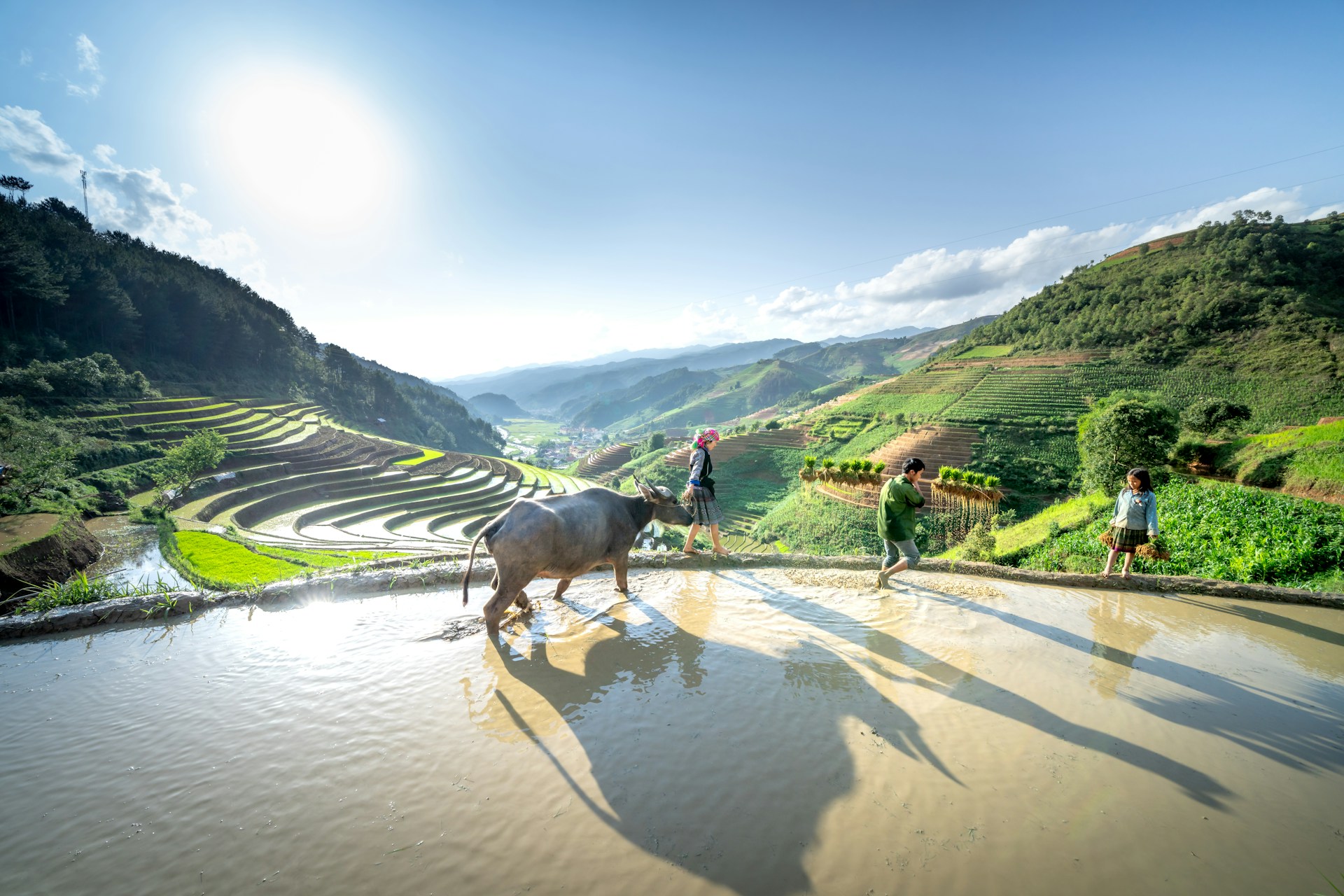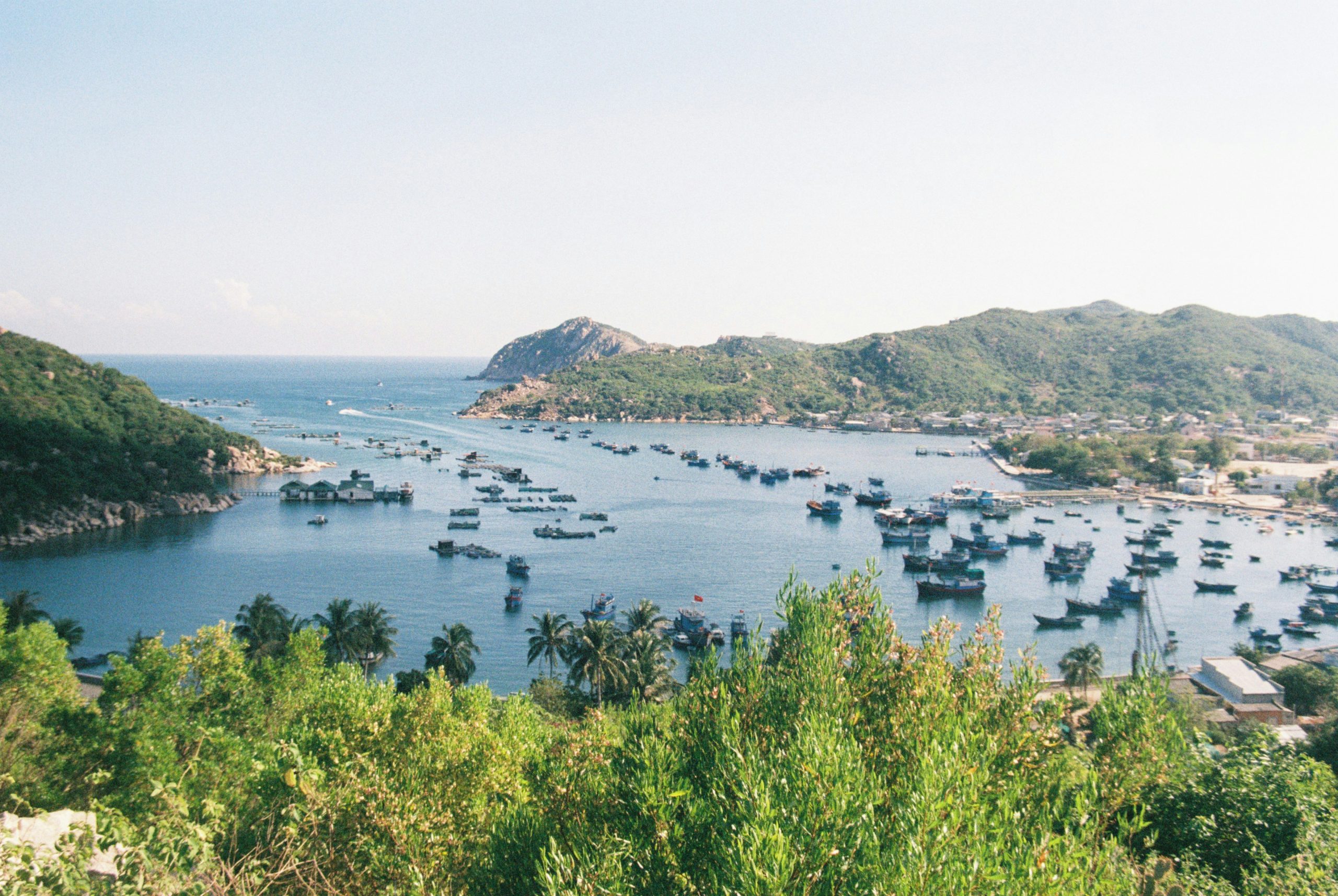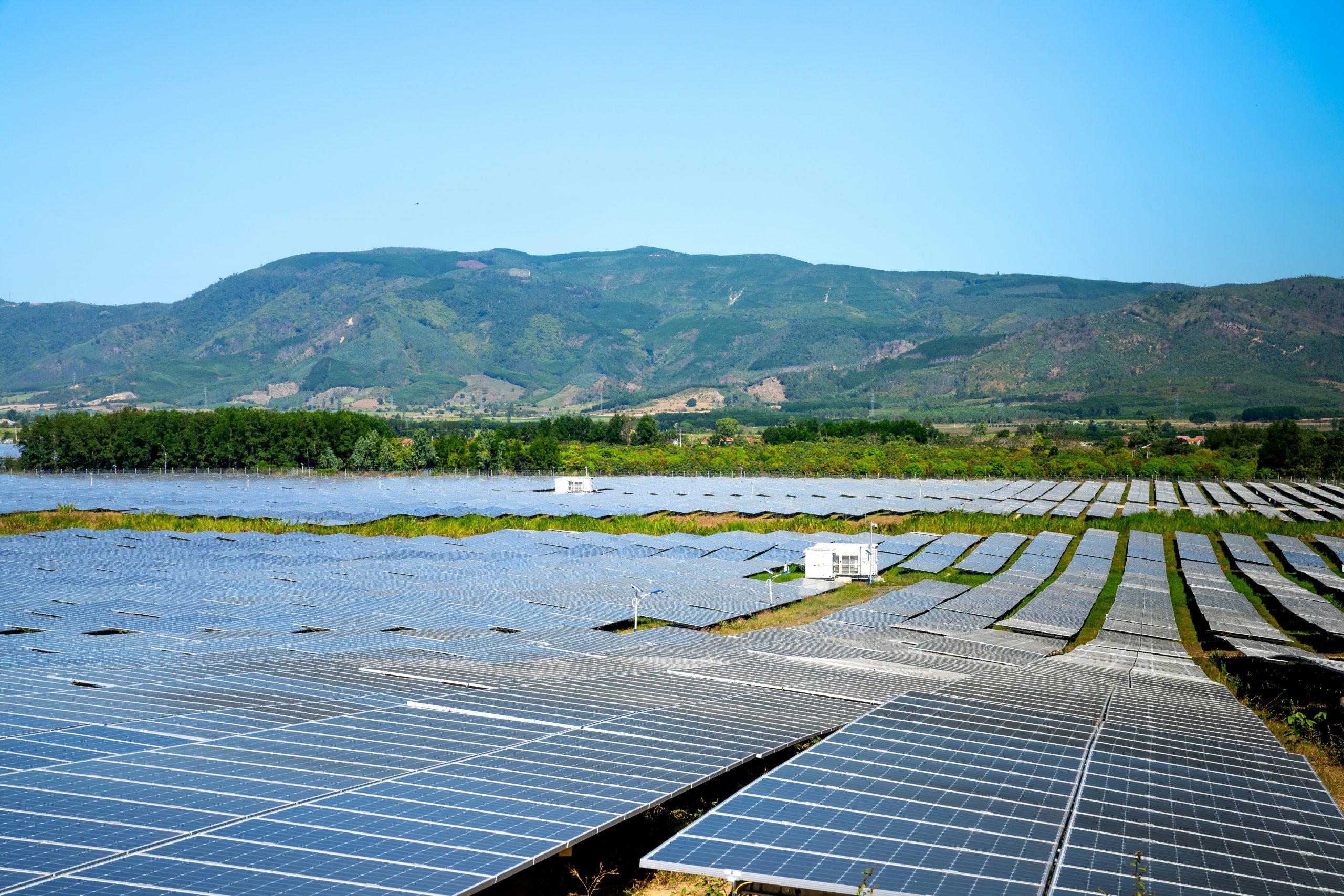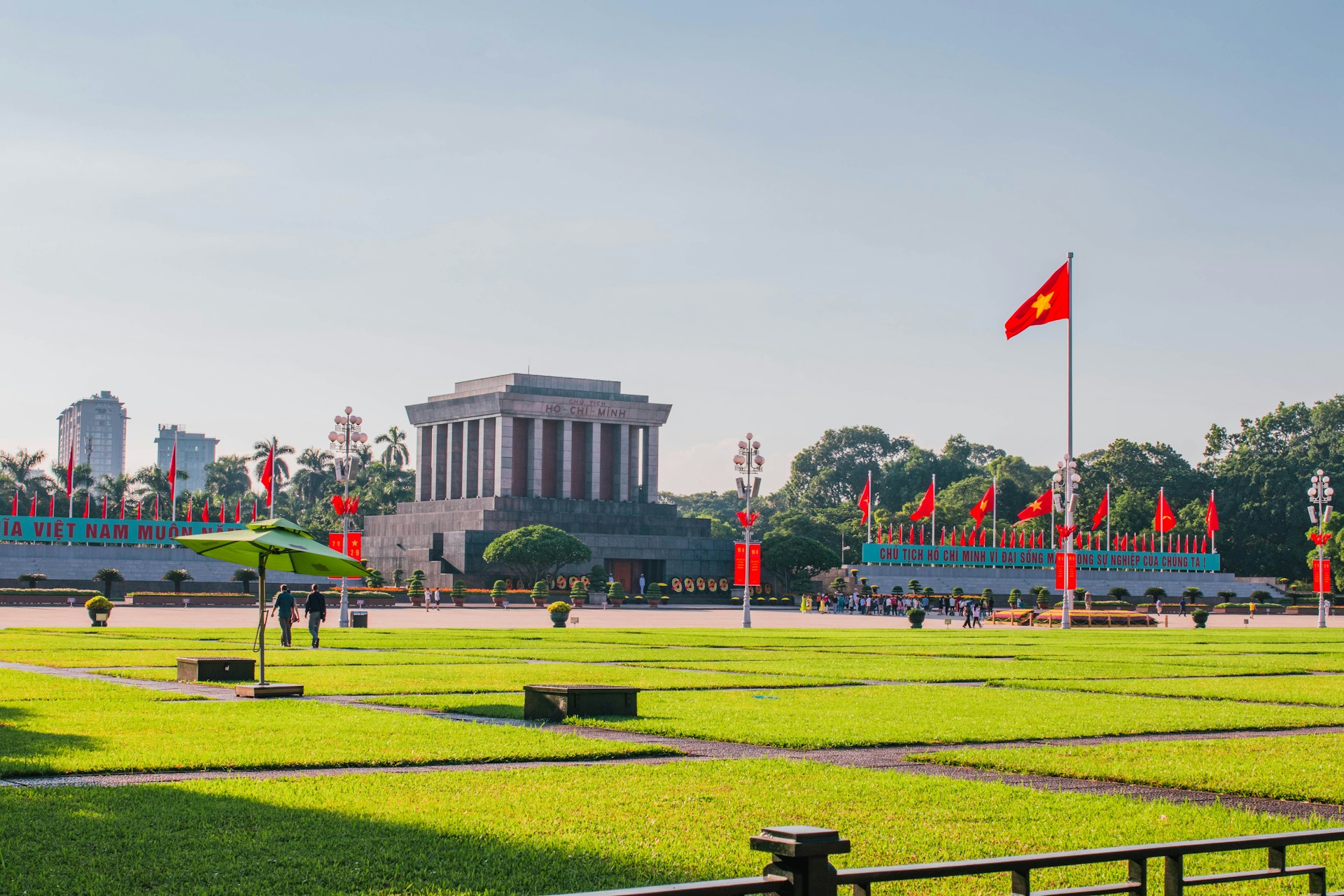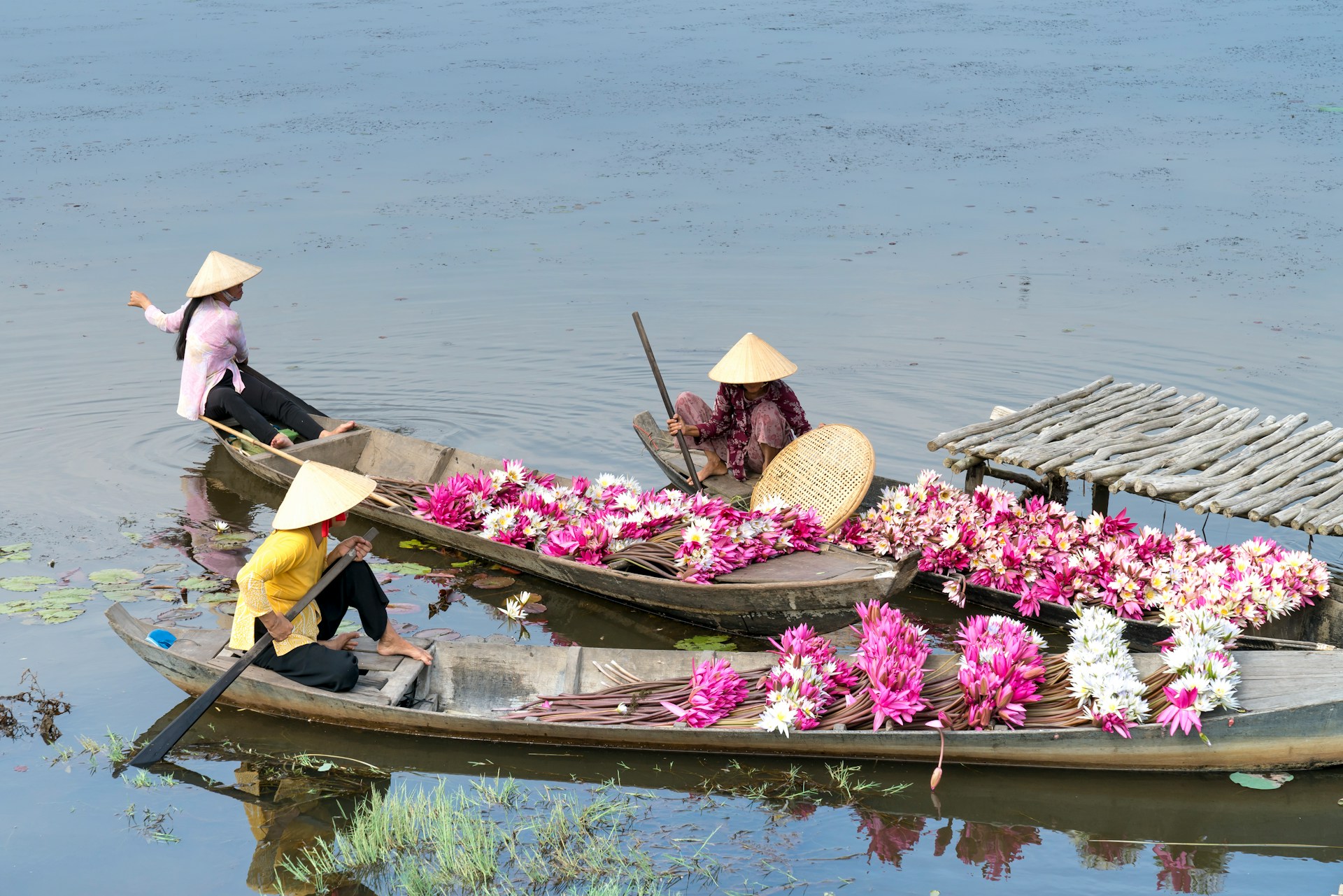
23/07/2025
Tin tức & Báo cáo mới nhất / Vietnam Briefing
Bình luận: Không có bình luận.
Việt Nam được đánh giá rộng rãi là có tiềm năng mạnh mẽ để trở thành trung tâm toàn cầu về nông sản và thực phẩm. Điều này được củng cố bởi nền tảng sản xuất trong nước vững chắc và kim ngạch xuất khẩu tăng vọt, đạt mức kỷ lục 1.400 tỷ USD vào năm 2024.[1]Việt Nam có những lợi thế đáng kể, bao gồm điều kiện tự nhiên đa dạng, mạng lưới các Hiệp định Thương mại Tự do rộng lớn, chính sách hỗ trợ của Chính phủ và sự quan tâm mạnh mẽ từ các tập đoàn FDI toàn cầu. Tuy nhiên, con đường phát triển này đang đối mặt với nhiều thách thức, chẳng hạn như chi phí logistics cao, năng lực chế biến sâu còn yếu, thương hiệu quốc gia còn manh mún, các rào cản kỹ thuật và an toàn thực phẩm ngày càng khắt khe, và thiếu hụt nguồn nhân lực chất lượng cao.
Thế mạnh nông nghiệp của Việt Nam
Việt Nam sở hữu những thế mạnh nền tảng và lợi thế chiến lược có thể tạo ra đột phá và giúp hiện thực hóa tham vọng trở thành trung tâm nông sản thực phẩm toàn cầu.
| Sức mạnh | Chi tiết |
| Năng lực sản xuất mạnh mẽ và đà xuất khẩu | ▪ Sản lượng dồi dàoNăm 2024, mặc dù gặp nhiều biến động thời tiết cực đoan, bao gồm thiên tai, lũ lụt, ngành nông nghiệp vẫn đảm bảo an ninh lương thực quốc gia với sản lượng lúa đạt 43,46 triệu tấn. Các ngành có giá trị gia tăng cao như thủy sản (tổng sản lượng 9,5 triệu tấn, tăng 2,51 tấn/năm) và lâm nghiệp (gỗ khai thác 23,33 triệu m³, tăng 7,91 tấn/năm) cũng ghi nhận mức tăng trưởng ấn tượng.[2].
▪ Ghi lại giá trị xuất khẩu: Tổng giá trị xuất khẩu nông, lâm, thủy sản năm 2024 đạt $62,4 tỷ USD, tăng 18,5% so với năm 2023, tạo thặng dư thương mại $18,6 tỷ USD. Các nhóm hàng chủ lực tăng mạnh, bao gồm rau quả ($7,12 tỷ USD), gạo ($5,75 tỷ USD) và cà phê ($5,48 tỷ USD). [3]. ▪ Sự hiện diện trên thị trường toàn cầu: Các sản phẩm nông nghiệp Việt Nam hiện có mặt tại gần 200 quốc gia và vùng lãnh thổ, giúp Việt Nam giữ vị trí là nước xuất khẩu nông sản lớn thứ 2 Đông Nam Á và thứ 15 trên thế giới[4]. |
| Hội nhập sâu sắc và hỗ trợ của chính phủ | ▪ Lợi thế Thương mại Chiến lược: Việt Nam đã ký kết và thực thi 17 FTA, hình thành mạng lưới thương mại rộng lớn với hơn 60 nền kinh tế lớn. Các hiệp định này đã xóa bỏ hoặc giảm đáng kể thuế quan, mang lại cho hàng hóa Việt Nam lợi thế cạnh tranh so với các đối thủ trong khu vực.
▪ Cam kết chính trị rõ ràng: Chính phủ đã ban hành “Chiến lược Phát triển Nông nghiệp và Nông thôn bền vững giai đoạn 2021-2030, tầm nhìn đến năm 2050” (Quyết định 150/QĐ-TTg), đánh dấu sự chuyển dịch từ “tư duy sản xuất” sang “tư duy kinh tế nông nghiệp”, tập trung vào giá trị gia tăng và tính bền vững. Chính phủ cũng thúc đẩy nông nghiệp công nghệ cao, nông nghiệp hữu cơ và nông nghiệp sạch thông qua các biện pháp chính sách cụ thể. |
| Vị trí chiến lược và dòng vốn FDI mạnh mẽ | ▪ Vị trí trung tâm: Nằm ở trung tâm Đông Nam Á và gần các tuyến vận tải quốc tế chính và thị trường tiêu dùng lớn, Việt Nam có tiềm năng trở thành mắt xích quan trọng trong chuỗi cung ứng khu vực, đặc biệt là với các dự án cơ sở hạ tầng lớn như Sân bay quốc tế Long Thành sắp hoàn thành.
▪ FDI xúc tác: FDI trong lĩnh vực nông nghiệp đang tăng trưởng nhanh chóng, với khoảng 537 dự án đang hoạt động tính đến đầu năm 2025, tạo ra khoảng 500.000 việc làm. Các tập đoàn hàng đầu như Nestlé, De Heus, CP Group, JBS và PepsiCo không chỉ mang đến vốn mà còn cả công nghệ tiên tiến, phương thức quản lý hiện đại và sự hội nhập vào chuỗi giá trị toàn cầu.[5]. |
Những hạn chế và thách thức chính
Mặc dù có tiềm năng to lớn, Việt Nam vẫn phải đối mặt với những điểm yếu mang tính hệ thống cần được giải quyết để phát triển bền vững.
| Giới hạn | Chi tiết |
| Những nút thắt trong chuỗi cung ứng lạnh và hậu cần | ▪ Chi phí quá cao: Chi phí logistics chiếm khoảng 20-25% giá trị nông sản, cao hơn đáng kể so với Thái Lan (12%) và mức trung bình toàn cầu (14%). Điều này làm giảm đáng kể lợi nhuận và sức cạnh tranh. Ví dụ, so với Thái Lan, các nhà xuất khẩu Việt Nam phải đối mặt với chi phí vận chuyển quốc tế cao hơn (cao hơn từ Hà Nội và Thành phố Hồ Chí Minh từ $1–1,2/kg). [6] , một phần là do Thái Lan có nhiều chuyến bay thẳng và tuyến đường biển đến các thị trường trọng điểm như Hoa Kỳ, EU, Úc và Trung Đông.
▪ Cơ sở hạ tầng chưa đầy đủ: Hệ thống giao thông kết nối các khu vực sản xuất với cảng biển vẫn còn kém phát triển. Thiếu các trung tâm logistics khu vực và thiếu trầm trọng kho lạnh và kho bãi chuyên dụng. ▪ Tổn thất sau thu hoạch cao: Công nghệ bảo quản yếu kém và hệ thống chuỗi lạnh dẫn đến tổn thất sau thu hoạch đáng kể, đặc biệt là đối với trái cây và rau quả, ước tính ở mức 30-35%, gây lãng phí tài nguyên rất lớn.[7]. |
| Xử lý sâu hạn chế và thương hiệu yếu | ▪ Phụ thuộc vào xuất khẩu thô: Khoảng 80-901 tấn nông sản xuất khẩu của Việt Nam ở dạng thô hoặc sơ chế, tạo ra giá trị gia tăng thấp. Năng lực chế biến sâu để tạo ra sản phẩm cuối cùng còn hạn chế vẫn là một trong những “rào cản cơ cấu” đáng kể nhất cản trở sự phát triển bền vững của ngành nông nghiệp. [8]
▪ Xây dựng thương hiệu chưa phát triển: Khoảng 801 tấn nông sản xuất khẩu chưa có thương hiệu, logo hoặc nhãn mác riêng biệt. Đáng chú ý, gần 801 tấn được tiếp thị dưới các thương hiệu nước ngoài. Điều này tạo ra một vòng luẩn quẩn: không chế biến sâu thì không có sản phẩm có thương hiệu, và không có thương hiệu thì việc nhận diện thương hiệu vẫn còn khó khăn. [9]. |
| Rào cản kỹ thuật và mối quan ngại về an toàn thực phẩm | ▪ Tiêu chuẩn nhập khẩu khắt khe hơn: Các nhà nhập khẩu lớn như EU, Nhật Bản, Hoa Kỳ và Trung Quốc đang thắt chặt các tiêu chuẩn vệ sinh và kiểm dịch thực vật (SPS). Năm 2024, Việt Nam đã nhận được 1.029 thông báo kỷ lục từ WTO liên quan đến an toàn thực phẩm. Chỉ trong hai tháng đầu năm 2025, EU đã ban hành bốn cảnh báo mới đối với nông sản Việt Nam.[10].
▪ Yêu cầu truy xuất nguồn gốc nghiêm ngặt hơn: Việc tuân thủ các tiêu chuẩn quốc tế (ví dụ: GlobalGAP) và thiết lập các hệ thống truy xuất nguồn gốc đáng tin cậy, minh bạch đã trở thành điều kiện tiên quyết để tiếp cận thị trường và phát triển bền vững tại các thị trường có tiêu chuẩn cao. |
| Thiếu hụt nguồn nhân lực có tay nghề | ▪ Khủng hoảng lao động: Ngành nông nghiệp đang đối mặt với khủng hoảng kép về lực lượng lao động, cả về số lượng lẫn chất lượng. Thiếu hụt chuyên gia và lao động có khả năng ứng dụng công nghệ tiên tiến. Lao động trẻ, có trình độ ngày càng rời bỏ ngành do thu nhập thấp và cơ hội phát triển hạn chế, cản trở quá trình hiện đại hóa ngành.
▪ Năng suất lao động thấp: Năng suất lao động nông nghiệp chỉ đạt 38,1% so với mức bình quân chung của cả nước trên tất cả các ngành kinh tế[11]. |
Việt Nam có tiềm năng lớn để trở thành trung tâm nông sản thực phẩm toàn cầu, nhưng để hiện thực hóa tầm nhìn này đòi hỏi phải giải quyết các rào cản cơ cấu sâu xa và đẩy nhanh quá trình chuyển đổi giá trị gia tăng.
B&Company có thể hỗ trợ các nhà đầu tư FDI vào nông nghiệp như thế nào
Với kinh nghiệm dày dặn tại Việt Nam từ năm 2008, B&Company có thể hỗ trợ các nhà đầu tư FDI quan tâm đến lĩnh vực nông nghiệp thông qua các lĩnh vực dịch vụ chính sau:
| Dịch vụ B&Company | Sự miêu tả |
| Nghiên cứu và phân tích thị trường | ▪ Báo cáo chuyên sâu về ngành: Cung cấp các phân tích toàn diện về các phân khúc nông nghiệp cụ thể (ví dụ: triển vọng ngành chè, xu hướng sản xuất và xuất khẩu, công nghệ giảm phát thải, sử dụng phụ phẩm nông nghiệp).
▪ Nghiên cứu thị trường tùy chỉnh: Tiến hành khảo sát định lượng (ví dụ: khảo sát người tiêu dùng và doanh nghiệp) và phỏng vấn định tính (ví dụ: phỏng vấn chuyên sâu, nhóm tập trung) để hiểu quy mô thị trường, chuỗi cung ứng, đối thủ cạnh tranh và sở thích của người tiêu dùng. ▪ Truy cập cơ sở dữ liệu doanh nghiệp: Hỗ trợ sàng lọc, phân tích và xác định các đối tác, nhà cung cấp hoặc khách hàng tiềm năng. |
| Tư vấn Chiến lược & Thâm nhập Thị trường | ▪ Chiến lược thâm nhập thị trường: Tư vấn và phát triển các chiến lược thâm nhập phù hợp cho các công ty FDI, từ đánh giá cơ hội và xác định phân khúc mục tiêu đến lập kế hoạch kinh doanh.
▪ Hỗ trợ pháp lý và thành lập công ty: Hỗ trợ xin Giấy chứng nhận đăng ký đầu tư (IRC), Giấy chứng nhận đăng ký doanh nghiệp (ERC) và các giấy phép cần thiết khác. ▪ Hỗ trợ thiết lập ban đầu: Hỗ trợ các công việc sau cấp phép, bao gồm thiết lập văn phòng, tuyển dụng tại địa phương và đào tạo lực lượng lao động. |
| Kết nối doanh nghiệp & Tìm kiếm đối tác | ▪ Xác định và đánh giá đối tác: Tận dụng mạng lưới và cơ sở dữ liệu của chúng tôi để xác định, tiếp cận và đánh giá các đối tác tiềm năng (ví dụ: nhà phân phối, đối tác liên doanh, nhà cung cấp nguyên liệu thô).
▪ Phối hợp họp và tham quan thực địa: Tổ chức các cuộc họp kinh doanh và chuyến tham quan thực địa đến các địa điểm sản xuất và khu vực canh tác để đánh giá thị trường trực tiếp. ▪ Hỗ trợ đàm phán: Thúc đẩy các cuộc đàm phán giai đoạn đầu cho đến các thỏa thuận hợp tác chính thức. |
| Tư vấn M&A | ▪ Xác định và đánh giá mục tiêu: Xác định và đánh giá các công ty nông nghiệp phù hợp với chiến lược M&A của nhà đầu tư.
▪ Hỗ trợ thẩm định: Phối hợp các quy trình thẩm định đối với các công ty mục tiêu theo quan điểm kinh doanh và thị trường. |
[1] Việt Nam xuất khẩu nông lâm thủy sản đạt kỷ lục 62,4 tỷ USD trong năm 2024 | Việt Nam+ (Việt NamPlus)
[2] Sản xuất nông nghiệp, lâm nghiệp và thủy sản năm 2024 đáp ứng nhu cầu trong nước và xuất khẩu
[3] https://www.vietnamplus.vn/viet-nam-xuat-khau-nong-lam-thuy-san-dat-ky-luc-624-ty-usd-trong-nam-2024-post1004019.vnp
[4] https://www.vietnamplus.vn/viet-nam-xuat-khau-nong-lam-thuy-san-dat-ky-luc-624-ty-usd-trong-nam-2024-post1004019.vnp
[5] Thu hút đầu tư FDI vào nông nghiệp: vẫn còn nhiều việc cần làm
[6] TT WTO VCCI – Chi phí logistics cao làm xuất khẩu nông sản nhiều thuận lợi nhưng cận cạnh tranh
[7] TT WTO VCCI – Chi phí logistics cao làm xuất khẩu nông sản nhiều thuận lợi nhưng cận cạnh tranh
[8] cấp độ xây dựng thương hiệu quốc gia cho nông sản Việt
[9] Xây dựng thương hiệu nông sản Việt Nam
[10] Việt Nam nhận được hơn 1.000 thông báo điều chỉnh an toàn thực phẩm từ các nước trong năm 2024 | BIẾT SÀI GÒN GIẢI PHÓNG
[11] Bai-bao-ve-Nong-nghiep-4.0-Duc_KTNN-Lan-2.pdf
* Lưu ý: Nếu bạn muốn trích dẫn thông tin trong bài viết này, vui lòng ghi rõ nguồn và kèm theo link bài viết để đảm bảo tôn trọng bản quyền.
| B&Company, Inc.
Công ty nghiên cứu thị trường của Nhật Bản đầu tiên tại Việt Nam từ năm 2008. Chúng tôi cung cấp đa dạng những dịch vụ bao gồm báo cáo ngành, phỏng vấn ngành, khảo sát người tiêu dùng, kết nối kinh doanh. Ngoài ra, chúng tôi đã phát triển cơ sở dữ liệu của hơn 900,000 công ty tại Việt Nam, có thể được sử dụng để tìm kiếm đối tác kinh doanh và phân tích thị trường. Xin vui lòng liên hệ với chúng tôi nếu bạn có bất kỳ thắc mắc hay nhu cầu nào. info@b-company.jp + (84) 28 3910 3913 |


